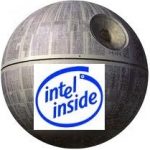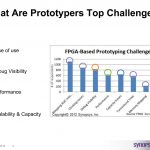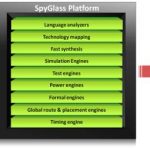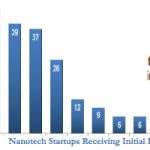Yes, I will be going to IDF again this year, even though it is the same day as the Apple new product announcement. As a born again Apple Fan that is really saying something but Intel has done a great job of motivating the fabless semiconductor ecosystem and I thank them for that.
Unfortunately, noticeably missing from the IDF presentation line-up is 14nm. The semiconductor equipment people continue to tell me that the 14nm move-in has been delayed a quarter or two. I will be investigating this further at IDF for sure, mostly at the 150+ company technology showcase since Intel does not control that information flow.
Also missing from the IDF technical line up are smartphone sessions. Tablets yes but smartphones no, which is telling. As I have mentioned before, making an SoC is a completely different thing than making microprocessors, which is why there has been a 12 month Atom lag in the past. If Intel is to have any chance in mobile that must change and I’m hoping to hear as much at IDF. No mention of Intel TV and wearable devices either. Intel missed the mobile high margin days so let’s hope they make it in time for TV and watches.
The keynotes are very much mobile though:
IDF 2013 represents the beginning of a new era for Intel, and indeed the entire computing industry. With the recent leadership transition now complete, Intel’s new CEO Brian Krzanich and President Renée James are well underway in resetting the course of the company with a clear emphasis on mobile computing leadership. Please join Brian and Renée to hear how this focus on all things mobile will energize the existing ecosystem of Intel hardware and software developers – as well as attract a new wave of developers. There has never been a better time to align with Intel as a company and on the most scalable, widely deployed and successful architecture of all time.
Tuesday, September 10 Mobilizing Intel
Brian Krzanich, Intel CEO, Renee James, Intel President
Wednesday, September 11 Innovate at the Speed of Mobility
Douglas Fisher, Vice President, General Manager, Software and Services Group
Kirk Skaugen, Senior Vice President, General Manager, PC Client Group
Dr. Hermann Eul, Vice President, General Manager, Mobile and Communications Group
Thursday, September 12 Seven billion futures, and you’re one of them
Dr. Genevieve Bell, Intel Fellow, Intel Labs, Director, Interaction and Experience Research
You can get the full IDF 2013 agenda HERE. IDF has been around since 1997 and is a staple technical conference for the PC industry. It will be interesting to see how many familiar faces I see this year as Intel penetrates the fabless semiconductor ecosystem through the foundry business. Last year I saw not one fabless person that I recognized, except for Paul McLellan. Nobody recognized me either, not one autograph or even a nasty look from one of the many Intel shills. This year should be different, absolutely!
Why am I so hard on Intel? Because I think technology monopolies are bad, they stifle innovation and seek to control markets that should not be controlled. It’s a Star Wars thing, may the force be with us!
Also Read: Intel Really is Delaying 14nm….
lang: en_US











